A vital instrument in asset management
Posted: 23 August 2005 | | No comments yet
In the last two years the roll-out of the innovative weigh-in-motion (WIM) system Quo Vadis has taken place on the Dutch rail network. This system, developed by ProRail, Baas R&D and NedTrain Consulting, has been installed in 38 locations, allowing the measurement of 80% of traffic movements and 96% of ton kilometres. Identification of trains is functioning well, using systems that are also used for traffic control purposes.
In the last two years the roll-out of the innovative weigh-in-motion (WIM) system Quo Vadis has taken place on the Dutch rail network. This system, developed by ProRail, Baas R&D and NedTrain Consulting, has been installed in 38 locations, allowing the measurement of 80% of traffic movements and 96% of ton kilometres. Identification of trains is functioning well, using systems that are also used for traffic control purposes.
In the last two years the roll-out of the innovative weigh-in-motion (WIM) system Quo Vadis has taken place on the Dutch rail network. This system, developed by ProRail, Baas R&D and NedTrain Consulting, has been installed in 38 locations, allowing the measurement of 80% of traffic movements and 96% of ton kilometres. Identification of trains is functioning well, using systems that are also used for traffic control purposes.
The development of Quo Vadis was initiated by the implementation of EU directive 2001/14 within The Netherlands1. It has cost €3.5 million (excluding the NedTrain part). This directive specifies that the track access charge must be cost-related, which is why a mixture of train kilometres, tonne kilometres, stops and energy consumption was chosen as its basis. The choice of measuring locations is optimised using a calculation model, based upon the forthcoming timetable. Quo Vadis has been developed for measuring the loads of passing trains, which are a measure of the maintenance requirements of the superstructure2. The superstructure (or track system) is one of the primary cost drivers in railway maintenance and renewal3. The Quo Vadis measurements are quickly available; the operators can easily track their haulage and access charging online via the Internet.
Rather than describing the use of Quo Vadis for its primary function (access charging), this article focuses on a number of important ancillary functions available for both the train operating companies and ProRail. First, a number of key technical features are introduced and, subsequently, the benefits of the system in terms of maintenance management and the possibilities for further development are discussed. Not discussed in this text is the technology behind Quo Vadis’s counterpart system at NedTrain, named Gotcha, which uses the collected data to assess the quality of wheels and to prioritise the repairs of NS trains. Most information for the two systems is identical; as Figure 1 shows, the raw data is collected locally and transferred, after each train passage using GSM-R/GPRS communication, to a central ProRail server, after which it can be used in the specific applications.
The measuring system
In the Quo Vadis system, measuring takes place using advanced fibre optic sensor technology. The sensor is mounted under the rail and is connected with a reader in a system box alongside the track. The reader generates an optical signal that is transmitted to the sensor over a fibre optic cable. The sensor converts the (minute) vertical deflection of the rail as a result of the passing wheel into a change in the optical signal, which is converted in turn by the reader into a precise electrical signal that is available for further processing (see Figures 2 and 3). Thanks to its compact construction, the sensor is resistant to the vibrations that occur in the rail. Other advantages are summarised in the frame next to Figure 3. The main advantage is that maintenance is relatively simple and hardly needed. The units are monitored remotely from a central location; only an annual inspection and service is required. Regular (mechanical) track maintenance is possible without removing the measuring unit.
After extensive testing, four sensors per location proved to provide a sufficiently reliable result, also allowing the speed to be simply measured. The sensor provides information about train weight, weight per axle, wheel quality, speed and the number of axles each time a train passes. The weight of the train can be determined from the deflection of the rail, while taking into account the track behaviour (variation of stiffness and damping over time) and the influence on the deflection of the rail under a wheel by adjacent wheels, as is the case within a bogie.
Figure 4 shows the signal generated by the sensor while the wheel passes over it. The axles can be seen on the horizontal axis whereas the vertical axis represents the weight. When a poor wheel passes over, there will be a vibration in the track. This signal does not depend on speed, provided that the speed is over 40km/h. When measuring weight, the effects of wheel quality must be eliminated to be able to apply the correct data. To allow for variations in the infrastructure, each measuring location is automatically calibrated using known ‘standardised weights’ from electric locomotives travelling over the network4.
Results and asset management spin-offs
The Quo Vadis/Gotcha measuring units have now been in service for some time and a range of important results have already been achieved by ProRail and by NedTrain, in the maintenance of NS passenger trains. Firstly, starting with the results for the operator, wheel quality has increased noticeably, whilst repair costs have fallen. The timely analysis with Gotcha allows a prioritisation in repairs (thus optimising the operation of NedTrain’s various under floor wheel lathes) and reduces the use of material while repairing ‘flats’. Also the availability of rolling stock has improved, which is particularly important during autumn when falling leaves cause problems. Furthermore, the number of broken springs and number of hot axles have both already fallen by a drastic 90% since the roll-out of Quo Vadis (see Figure 5).
Secondly, ProRail gained a much better and updated insight into the traffic performance realised on the network. The data from Quo Vadis together with the information from the train log files provide information about the actual use of all infrastructure elements. It is now known for each line section how often, and with what load, trains run over it. This is also known for each set of automatic switches, even for each direction and for each position.
Over 2004, the number of tonnes transported proved to be 16% higher than thought beforehand, based on information from the timetable. Apart from this general insight, detailed data on axle loads and dynamic forces exerted by the wheels of specific trains have become available. Figures 6 and 7 provide an overview of these axle loads and dynamic force measurements, collected in Quo Vadis. They show that there is both a small percentage of overloading and high dynamic forces, both of which can be highly damaging to the superstructure. With this insight, measures can be taken, for example, in the form of incentive schemes or regulation (thresholds) to encourage the carriers to maintain their wheels properly.
Thirdly, the information derived from the measurements is also highly important to help develop more refined usage and condition based inspection and maintenance strategies. As a first example, using the data, three categories of switches have now been identified, each requiring their own maintenance strategy. Figure 8 shows this assessment process graphically; the scores are based on the frequency of use of the switches, loading, number of trains using the diverting rail etc. A strong differentiation becomes clear between Class A switches which handle the majority of traffic, whereas large quantities of switches (Class C) hardly contribute to the traffic process. Based on the new categories, a usage based inspection regime is currently being tested in a pilot. Costs of minor switch maintenance are expected to drop by 10% (€2 million each year) after implementing this new regime.
In a similar way the classification of tracks for the purpose of depreciation can be done much easier, quicker and more accurately, using Quo Vadis data, than in the past. Figure 9 shows the current classification and usage of the Dutch network, based on UIC fiche 7.14; some significant changes to the existing classification were found after using the new data.
Fourthly, the information derived can be used in a variety of statistical analyses in order to explain the behaviour, life spans and performance of infrastructural assets and to support the refinement of performance regimes between ProRail and partners in the rail industry. An example is the use of Quo Vadis data in the statistical analysis of switch failures, which demonstrated that tonnage and trains using the diverting rails are significant factors in explaining those failures5. Using the data, a rather accurate failure probability function has been developed on the basis of daily tonnage and usage of the diverting rails; Figure 10 shows an indicative result for failures related to the ‘civil part’ of the switches for the purpose of illustration only.
Finally, the outcomes have led to a project in which the possible re-engineering of track layouts and rationalisation (removal) of switches is studied. Using Quo Vadis, the function of certain sets of switches could directly be questioned; some are being used only once a day, while causing considerable maintenance expenses. An approach to more systematically judge track layouts on their costs and benefits is now being studied, while quick-wins in rationalisation have already been made (i.e. the elimination of switches in the renewals plan).
Conclusion and outlook
The Quo Vadis weigh-in-motion system serves to comply with the European directives and the national railway act. However, this paper highlighted that Quo Vadis is much more than a tool for access charging. It is also highly valuable for the asset management process of both train operators and infrastructure managers. With the first results ‘in the pocket’, ProRail and its partners are now working to further utilise the possibilities of this type of (rapid and accurate) ‘weigh-in-motion’ measurement.
First of all, by linking this information to the quality data recorded twice a year using a special inspection train, it is possible to visualise deterioration as a result of use in a detailed manner. This should improve current life cycle judgements and help validating maintenance cost models. Moreover, it is possible to extend ProRail’s performance analysis process, relating to switch and track failures, using the Quo Vadis’s data richness.
Secondly, the use of Quo Vadis as an alert system in the case of permitted axle loads or dynamic forces being exceeded is currently being prepared (technically). As mentioned before, in addition to weight, wheel quality is a second extremely important cause of wear and tear to the superstructure2. Incentives and ‘dynamic load’ thresholds should encourage the carriers to maintain their wheels properly, which is beneficial for both infrastructure management and, in the end, the train operator. It is now sufficiently clear that dynamic loads also cause additional damage to the vehicles themselves.
Finally, a growing number of ‘weigh-in-motion’ and vehicle identification applications are being elaborated for the near future. As an example, the refuelling depots will be fitted with tag readers linked to diesel output. Locomotives with tags can use the refuelling depots, while bills are processed automatically. Another future application appears to be the expansion of Quo Vadis stations with equipment to determine emissions (e.g. combustion gases), noise and vibrations. A pilot location has been set up within the European cooperative Eureka-project ‘Footprint’. Moreover, noise measurements can be used to signal defective bearings in trains, in order to prevent the occurrence of hot bearings in a much earlier phase. Last but not least, recent measurements made clear that Quo Vadis is an accurate tool for estimating the number of passengers per train, which is important information for the operators.


Figure 1: Overview of Quo Vadis / Gotcha
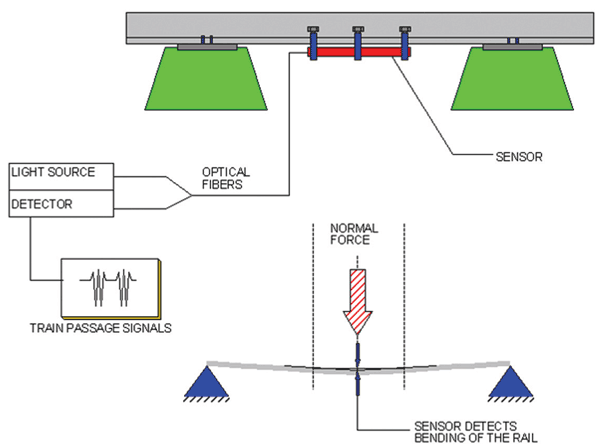

Figure 2: Operating principle of the optical sensor
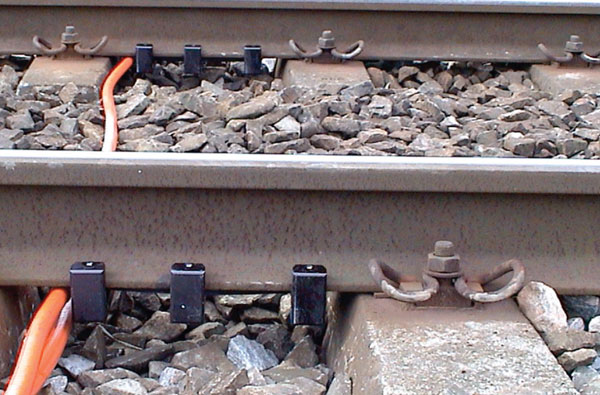

Figure 3: The sensor attached to the track
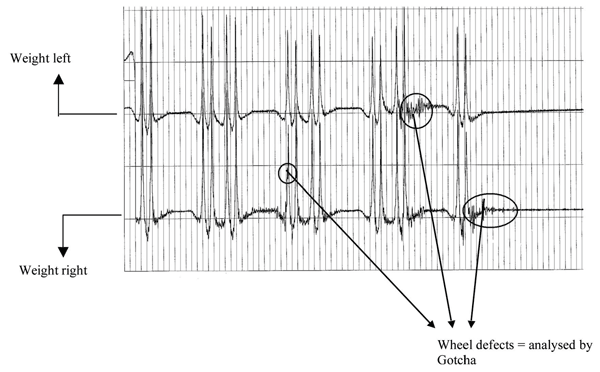

Figure 4: Typical sensor output


Figure 5: Progress in hot bearings reduction (N5) and Quo Vadis roll-out
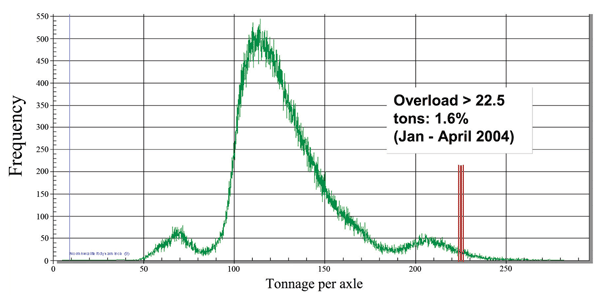

Figure 6: Axle loads in the The Netherlands
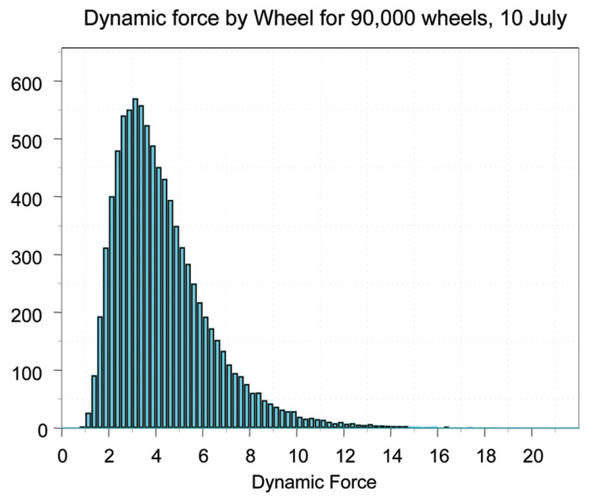

Figure 7: Measurements of dynamic forces (kN, vertical axis: number of counts)
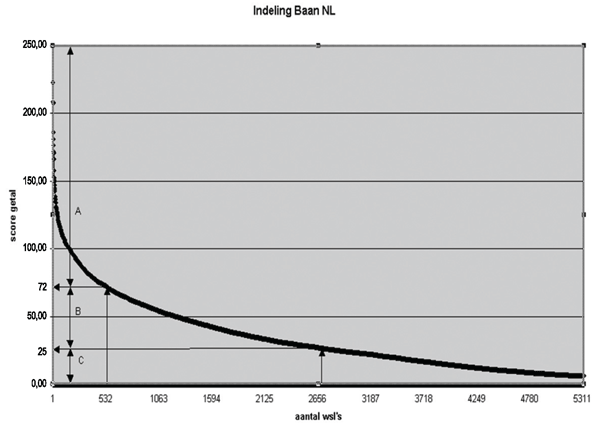

Figure 8: Classification of switches based on intensity of use
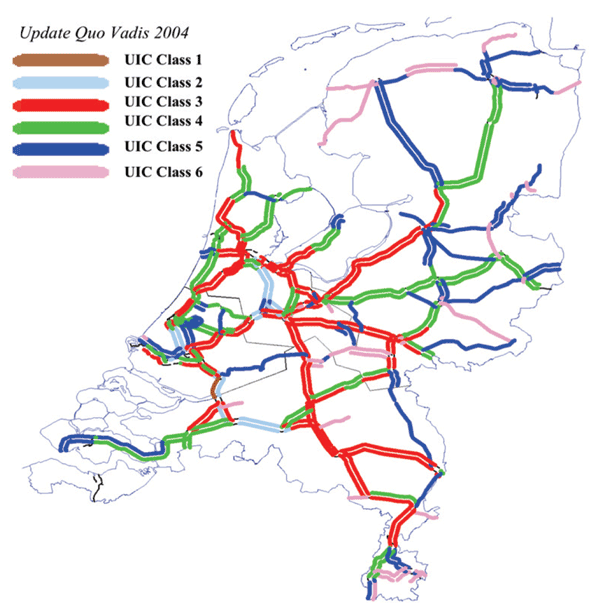

Figure 9: Quo Vadis data used for an updated classification of tracks
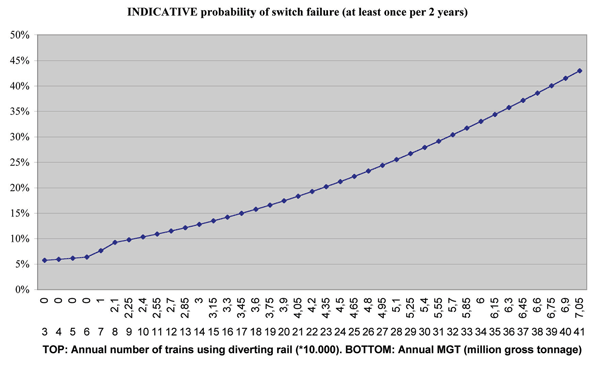

Figure 10: Illustrative probability function of 'civil' switch failures based on increasing tonnage and trains using the diverting rail NB: The function is infuenced by the choices in the failures classification process
References
- EU (1991) ‘European Council Directive 2001/14’, Brussels
- Esveld, C. (2001), ‘Modern Railway Track’, MRT productions, Zaltbommel, The Netherlands
- Zoeteman A. (2004), ‘Railway Design and Maintenance from a Life Cycle Cost Perspective’, ISBN 90-9018691-3, Gouda, The Netherlands, www.go.to/LCC-project
- Buurman G. and W. van Minderhout (2004), ‘Quo Vadis: Not just a measuring instrument for weights and wheel quality; the development of a measuring system for ProRail’, Proc. of 4th Int. Conference on Weigh-In-Motion, 20-23rd February 2005, Taipei, Taiwan
- ProRail (2005) ‘Yardstick Track Renewal: standardised technical and economical policy for track and switch M&R’, forthcoming, Utrecht, The Netherlands
Global Railway Review Autumn/ Winter Issue 2025
Welcome to 2025’s Autumn/ Winter issue of Global Railway Review!
The dynamism of our sector has never been more apparent, driven by technological leaps, evolving societal demands, and an urgent global imperative for sustainable solutions.
>>> Read the issue in full now! <<<







